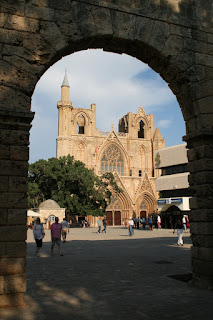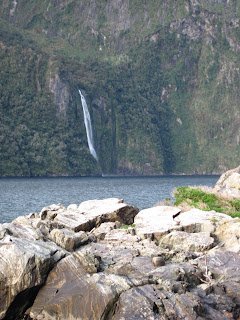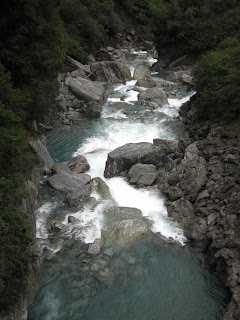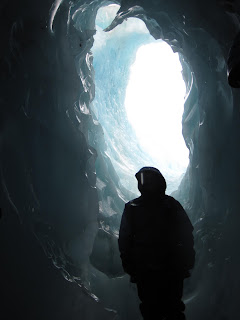I arrived in Cyprus just after a big thunderstorm, so the air was hot but not heavy. My first impression was that Cyprus is very beige. Everything is beige – the dirt, the buildings, the roads...
Actually, I tell a lie. My first impression was that Cyprus is so very Anglicised. The first advert I saw upon leaving the aeroplane was for TGI Fridays, and it detailed all the different branches in Larnaca. Helpful information for the majority of Brits on my plane, but the likelihood of me ending up in TGI Fridays in Manchester is minimal, let alone on foreign lands.
Anyways, I soon got over the Englishness and the beigeness, and we went to Bernie's house. I shall talk about that in a later blog.
Yesterday we had a nice relaxed day – we got up reasonably early as we had to pick up Bernie's friends from the port in Larnaca. This involved me driving Bernie's mums car.
Automatics really are the way forward. Just a stop pedal and a go pedal – it's like go-karting! Fortunately in Cyprus everyone drives on the left like in Britain, but all the speed limits are in kilometres. Helpfully Bernie's mum has written a conversion chart on the dashboard in tippex to avoid confusion.
After collecting Bernie's friends, we went back home and caught up on their travels. They had recently cycled from London to the Middle East, over a period of about six months, and are now making their way back home. They have spent the majority of this time camping or sleeping rough, so we spent most of the day providing food, running water, washing facilities and tobacco. We did go for a nice swim in the Mediterranean, but due to my true Anglo-Saxon heritage (i.e. a ginger mother) I had to dodge the carcinogenic rays with a UV top, and probably looked quite ridiculous to the two olive-skinned Cypriots we were sharing the beach with.
I tell myself I'm an 'English rose', rather than just pasty.
Today we took our cycling friends to Famagusta, where they intended to get a ferry to Turkey. To make sure everyone understands the events of the day, first I shall give a brief (and probably incorrect and naive) recap of recent Cypriot history.
The Ancient Greeks invaded Cyprus around 1200 BC, and the island prospered. Since then, Cyprus has been ruled by: Assyrians, Egyptians, Persians, Egyptians (again), Romans, Egyptians (again again), Romans (again), Byzantines, Arabs, Byzantines (again), the English, the French, Italians, the French (again), Italians (again), Ottomans, and the British in 1914. The British had been responsible for the administration of the island since 1878, with the Turks maintaining ownership, but as Britain and Turkey found themselves on opposing sides with the outbreak of the First World War, the British assumed sovereignty of the island.
The Greek Cypriots originally welcomed British rule, as it was generally assumed they would promote enosis, union with mainland Greece. Indeed they did try to do this in 1915, but Greece rejected the terms.
In 1960 Cyprus gained indepence from Britain. Under this agreement, Cyprus was prohibited from attemping to unite with either Greece or Turkey, and the British retained control of several areas for military purposes, due to Cyprus's strategic position near the Middle East. However, the Turkish Cypriots, an ethnic minority, became increasingly uncomfortable with the threat of being forced into enosis with Greece, and the early 1960's were marred by violence and political difficulties. In 1964 the violence was such that the UN had to deploy troops to help the British forces maintain peace. The Major General used a green pencil to draw a ceasefire line across the capital city (and later the rest of the island), and 'The Green Line' was born.
The state of affairs in Cyprus continues to deteriorate over the next few years, until the Turkish army arrived in 1974 to take control over North Cyprus. The Greek Cypriots who lived in the north third of the island fled to the south, and similarly the Turkish Cypriots in the south fled northwards. Many were caught up in battle and died. After that, the ceasefire line divided the island wholly, and no one crossed from one side to the other in 29 years. South Cyprus (the Republic of Cyprus) became more Hellenised, and North Cyprus became almost completely Turkish.
In 2003, however, the first step towards a more unified Cyprus occurred. The president of North Cyprus (known by the Turkish as the Turkish Republic of Northern Cyprus(TRNC), and by everyone else as the occupied territories) opened the ceasefire line to travel, allowing people from both sides of the divided capital to cross to the other, as long as they were back to the own side by the end of the day. The Greek government were taken completely by surprise by this amendment, and no one knew how the Cypriots would react. After all, many still had family and homes on the other side of the line that they had not seen in 29 years.
The answer was: the Cypriots did not react. Thousands upon thousands crossed the border in the next few weeks, visiting their old houses and walking around the places that were so familiar to them. The two populations were friendly, exchanged gifts and tears, and since then there has been no major incident. The border is now open to crossing in six places, and Cypriots can now cross for three months at a time. The UN still maintain a presence along the line, and will until reunification is achieved.
And so...back to the events of today.
Famagusta is in North Cyprus, so we had to cross the Green Line to get there. On the way we saw the ruins of Marąs, a deserted town on the border. Pre-1974 this was a prosperous town inhabited by many Greek Cypriots who worked in Famagusta. However, when the Turkish army landed, they had to flee the area in such a hurry that there are still plates on the tables with breakfast foods on them, light bulbs still switched on, curtains blowing in the wind. Since then, no one has been back, and Marąs remains a ghost town.
After Marąs came several Turkish outposts, with the red and white Turkish flag and the white and red TRNC flag flying proudly. Then came the Agios Nikolaos Crossing.
Manned by Greek soldiers on the South side, followed by a small stretch of road then Turkish soldiers as it goes North, the area is studded with customs officers and signs warning of crossing without the correct documentation. We had to purchase additional insurance to allow us to drive in the North, and then we got our Turkish visas. The border guards stamp a piece of paper that is not included in your passport. This is because if you tried to enter South Cyprus through another way, e.g. flying into Larnaca airport, you would be detained and heavily questioned if you had a Turkish stamp in your passport.
After having your passports and visa checked by both Greek and Turkish border guards, we were in North Cyprus.
Since the division in 1974, the South prospered from tourism and entering the EU, but the North trailed behind significantly. However, the Turkish economy is picking up, and the GDP of the TRNC is now around 50% of that of the Republic of Cyprus. As such, Famagusta is still a tourist attraction but does not have that 'Brits On Tour' feel that Larnaca does, and the tourists we saw were mainly American or other nationalities.
I, however, looked touristy enough to represent the whole of Britain, with my white, white skin and my giant camera.
Under Italian rule Famagusta prospered, but invading Ottomans laid waste to the city. Much of the crumbling Venetian walls still remain, however, and we wandered around the remnants of the fort for a bit. We also saw the Lala Mustafa Paşa Mosque, a very impressive building that was built as a church in the 1200's but during the Ottoman seige the two towers were destroyed. It was then converted into a mosque, and they added their own minaret.
Unfortunately the internet connection here doesn't seem up to loading photos, and it just gets stuck on 13%.
After a bit of wandering we settled down in Petek's cafe and had some treats, but I will not disclose too much about this today. Tomorrow we are going to drop in to Famagusta on our way slightly further north, and I will talk about the treats then. For now, I shall go to bed, as the heat is rather exhausting.
















































